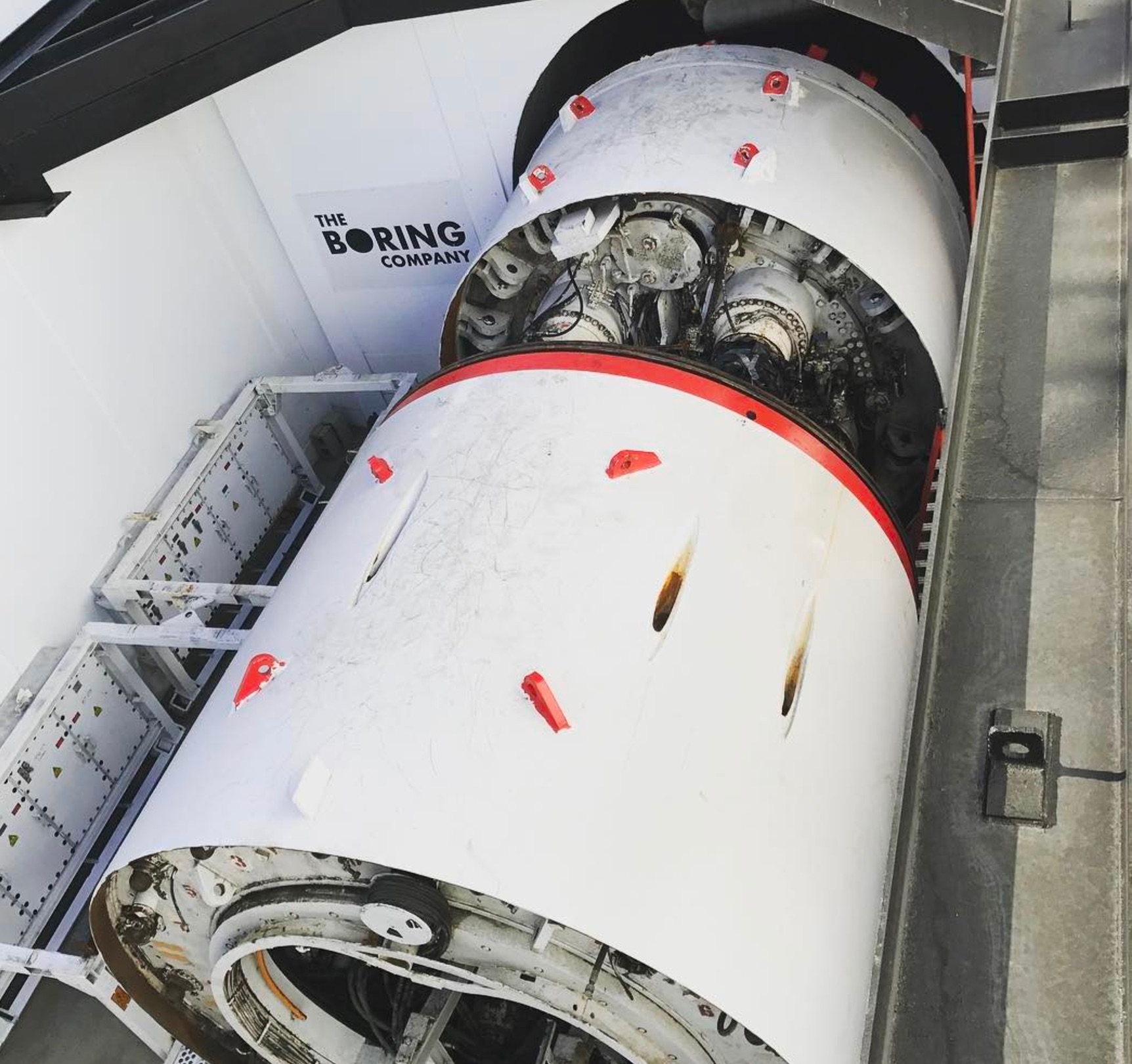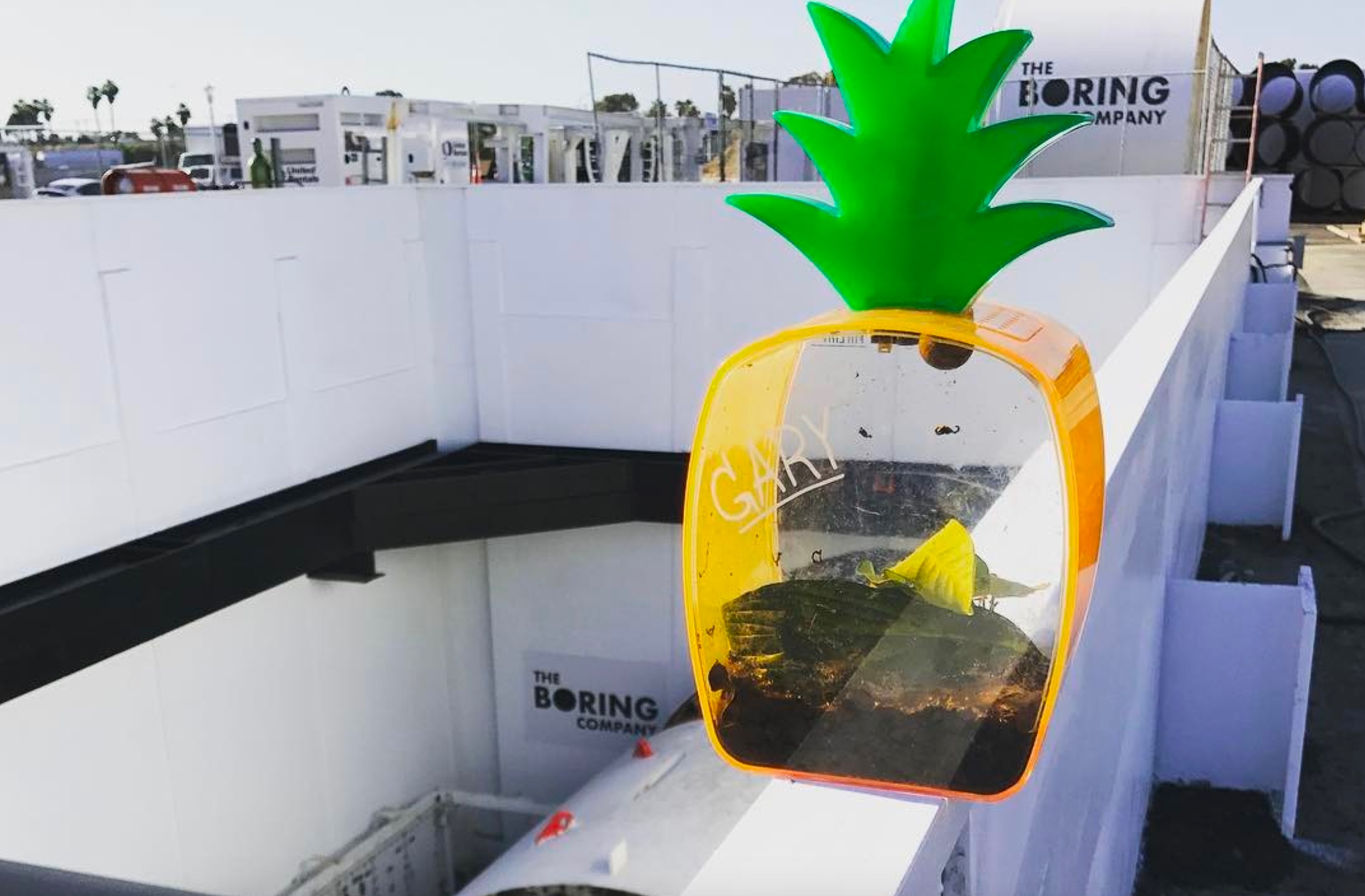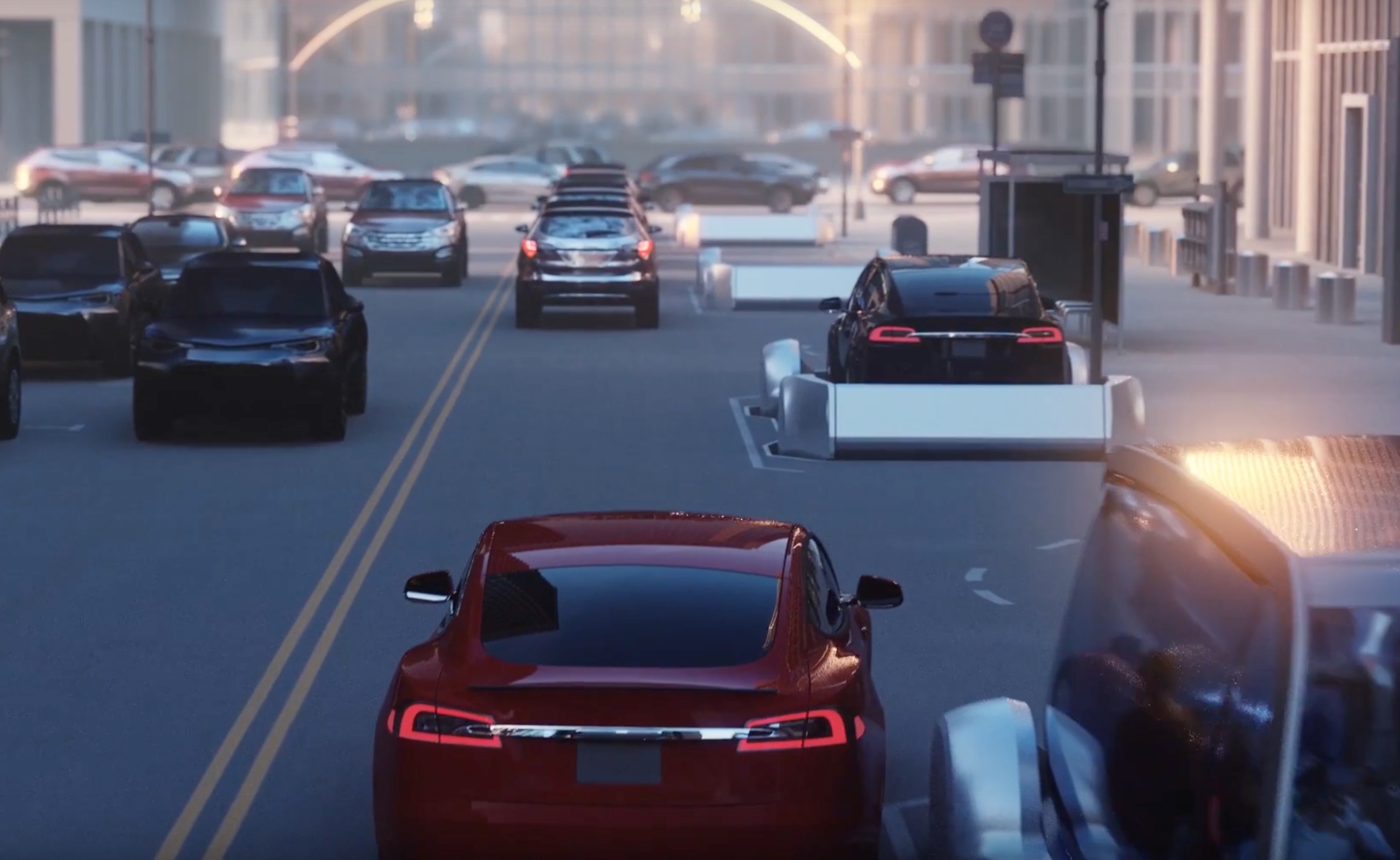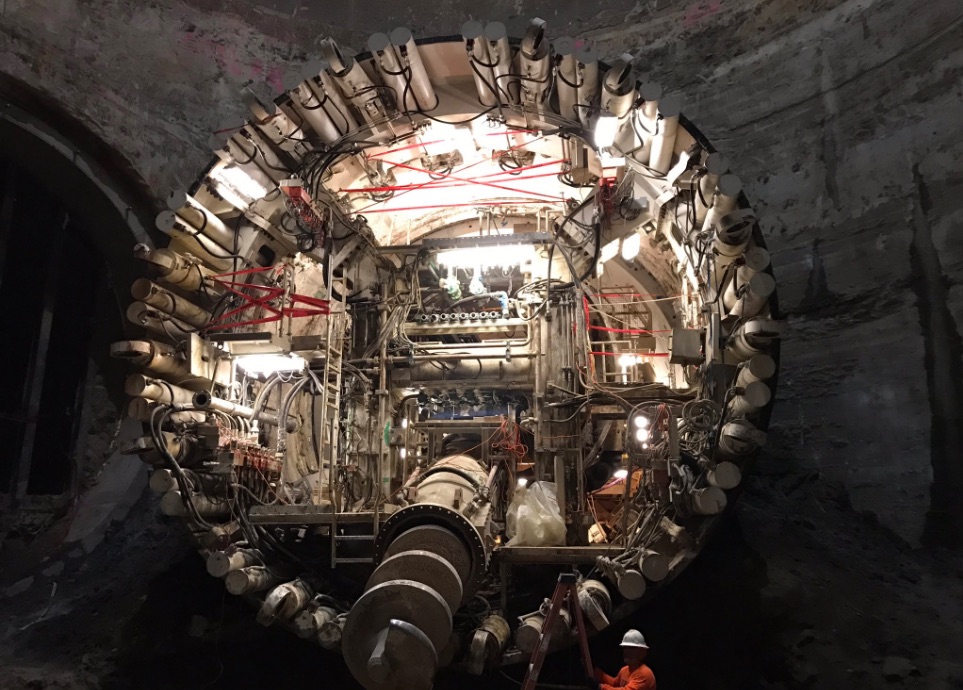

News
Musk’s Boring Co reveals plan to support Hyperloop in published FAQ
Elon Musk’s plan to integrate Tesla electric sleds traveling through underground tunnels dug by The Boring Company will also include support for vacuum-sealed tunnels used by 600+ mph Hyperloop Pods.
The reveal comes from the company’s newly published Frequently Asked Questions page that does away with introductions and cuts straight to the chase.
“A large network of road tunnels many levels deep would fix congestion in any city, no matter how large it grew (just keep adding levels). The key to making this work is increasing tunneling speed and dropping costs by a factor of 10 or more – this is the goal of The Boring Company. Fast to dig, low cost tunnels would also make Hyperloop adoption viable and enable rapid transit across densely populated regions, enabling travel from New York to Washington DC in less than 30 minutes.” reads the FAQ.
The company isn’t even traveling at a snail’s pace, yet it has big plans to do just that – dig tunnels faster than a snail travels. In this case, resident snail Gary (who lives in a pineapple under the sea) can move at 14 times the speed of a Tunnel Boring Machine (TBM) and represents the target speed for the company’s boring machines.
The Framework for Hyperloop
The FAQ sheet broke news that Musk and the team at The Boring Company, in cooperation with Tesla, are planning to build tunnels that can support multi-payloads including that of a Hyperloop Pod. In addition to enabling travel and transport at much higher speeds, this addition is likely to set the Tesla electric sled platform as the standard track that will be used to support mobility of the Hyperloop Pod.
Certain segments of the underground tunnels will have a vacuum shell, if not the entire track, that will allow the tunnel to be held at vacuum. Long distance travel would likely be performed in tunnels held at vacuum, enabling for higher speeds of travel. This format of local versus long distance is the same used by train systems in Europe that have different trains and tracks depending on train speed and distance of travel.
Converts Internal Combustion Vehicles into EVs
Another upside of the system is that it enables the conversion of internal combustion vehicles into zero emission vehicles. When a traditional petroleum powered vehicle is moved onto an electric sled, it will be moved through a system that emits zero emissions. This eliminates the emissions these vehicles would have emitted if they would had ordinarily travelled by road to their destination.
Many people will take Hyperloop Pods to their destinations due to the lower cost of travel. Logistics companies will also shift payload transportation to the tunnel system due to the lower cost as a result of not having a driver, higher speed and automated control over the load. With all of this traffic moving to the conceptual tunnel-based transportation system, it has the potential to radically slash the amount of transportation related emissions and demand for fossil fuels.
If the petroleum industry wasn’t paying attention to Musk and the impact Tesla may have on automotive related fuel consumption, this announcement is surely the wake up call they needed.
Earthquake!
Hollywood thrillers over the years have cast subway systems as the perfect set for apocalyptic thrillers where only a muscular hero armed with backpack full of lithium ion batteries, a stick of bubblegum and the copper from the wiring for the lights can save the day.
The truth, it turns out, is much different. The FAQs relay the facts that structural engineers have know for ages – that properly designed tunnels are one of the safest places to be during an earthquake. The tunnels is not subject to surface forces and instead of resisting the movement of the earthquake, moves with the ground.
Dirty Business
When tunneling in the Minecraft video game, the tunnel materializes and the blocks smashed with a pickaxe or sword simply disappear or move into inventory. The real world is unfortunately not so simple, but The Boring Company has plans to make it just a bit more like Minecraft.
Two major challenges with traditional tunneling are the massive amount of earth being displaced by the tunnel and the equally as challenging amount of concrete that is required to seal the circumference of the tunnel. To solve these challenges together, The Boring Company hopes to develop a process for using the resulting soil to produce earthen bricks. These bricks could even be used as a component of the tunnel lining itself or simply sold as a product.
This is yet another piece of evidence that Tesla truly is attempting to create Minecraft in the real world, reviving the ancient practice of crafting bricks from dirt.
In addition to turning a liability into an asset, this has the potential to drastically cut the amount of concrete used in the production of the tunnels it is constructing. Because of the sheer mass of concrete and the effort required to extract its components, and ship them to the destination, concrete production accounts for a staggering 4.5% of the world’s greenhouse gas emissions. The Boring Company hopes to take a chunk out of those emissions by using bricks where possible in the construction of its tunnels.
Where The Boring Company will go from here is anyone’s guess but this latest update makes it clear that Musk is never willing to settle for the status quo, and always begins working from the ground up – or in this case, from the ground down – when moving into a new business.
News
Tesla Robotaxi has already surpassed Waymo in this key metric
Tesla Robotaxi has already overtaken Waymo in Austin in one key metric, but there’s still more work to do.

Tesla Robotaxi has already surpassed Waymo in one extremely important key metric: size of service area.
Tesla just expanded its service area in Austin on Monday morning, pushing the boundaries of its Robotaxi fleet in an interesting fashion with new capabilities to the north. Yes, we know what it looks like:
🚨 Tesla’s new Robotaxi geofence is…
Finish the sentence 🥸 pic.twitter.com/3bjhMqsRm5
— TESLARATI (@Teslarati) July 14, 2025
The expansion doubled Tesla Robotaxi’s potential travel locations, which now include the University of Texas at Austin, a school with over 53,000 students.
The doubling of the service area by Tesla has already made its travel area larger than Waymo’s, which launched driverless rides in October 2024. It became available to the public in March 2025.
According to Grok, the AI agent on X, Tesla Robotaxi’s current service area spans 42 square miles, which is five square miles larger than Waymo’s service area of 37 square miles.
Tesla Robotaxi (red) vs. Waymo geofence in Austin.
Much can be said about the shape… but the Robotaxi area is now ~3.9 mi² (10 km²) larger than Waymo’s!! pic.twitter.com/dVfh2ODxJC
— Robin (@xdNiBoR) July 14, 2025
The service area is one of the most important metrics in determining how much progress a self-driving ride-hailing service is making. Safety is the priority of any company operating a ride-hailing network, especially ones that are making it a point to use autonomy to deploy it.
However, these companies are essentially racing for a larger piece of the city or cities they are in. Waymo has expanded to several different regions around the United States, including Arizona and Los Angeles.
Tesla is attempting to do the same in the coming months as it has already filed paperwork in both California and Arizona to deploy its Robotaxi fleet in states across the U.S.
As the platform continues to show more prowess and accuracy in its operation, Tesla will begin to expand to new areas, eventually aiming for a global rollout of its self-driving service.
News
Tesla Megapacks arrive for massive battery replacing coal plant
Tesla Megapacks have started arriving on-site to the Stanwell Battery Project, just as Queensland prepares to wind down the Stanwell coal plant.

The first of over 300 Tesla Megapacks have arrived to the site of a massive battery energy storage system (BESS) being built in Australia, dubbed the Stanwell Battery Project after a coal plant it’s set to replace.
In a press release last week, the Stanwell Battery Project announced that the first Tesla Megapack 2XL units had arrived to the site, which is located outside of Rockhampton in Queensland, Australia. The project will eventually feature 324 Megapack units, set to arrive in the coming months, in order to support the 300MW/1,200MWh battery project.
“The Stanwell Battery is part of the diversification of our portfolio, to include cleaner and more flexible energy solutions,” said Angie Zahra, Stanwell Central Generation General Manager. “It is just one part of the 800 MW of battery energy storage capacity we have in our pipeline.
“Capable of discharging 300 MW of energy for up to four hours (1,200 MWh), our mega battery will be one of the largest in Queensland.”

Credit: Stanwell
Did you know Tesla’s Lathrop facility churns out a Megapack every 68 minutes? That’s enough energy to power 3,600 homes for an hour per unit! ⚡️ pic.twitter.com/bG6fpHkB9O
— TESLARATI (@Teslarati) June 11, 2025
READ MORE ON TESLA MEGAPACKS: Tesla Lathrop Megafactory celebrates massive Megapack battery milestone
The state is working with government-owned company Yurika to facilitate construction, and the process is expected to create roughly 80 jobs. The project is expected to come fully online in May 2027, with initial commissioning of the Megapacks aiming for November 2025.
The Stanwell Battery is set to replace the nearby Stanwell coal generation plant, which the government is planning to wind down starting in 2026 as part of efforts to reach an 80 percent renewable energy generation ratio by 2035. Meanwhile, the government is also set to begin winding down the Tarong and Callide coal plants, while several other Megapack projects are being built or coming online. o ya
Tesla currently has two Megapack production facilities, located in Lathrop, California, in the U.S. and another that came online earlier this year in Shanghai, China. The Shanghai Megafactory shipped its first units to Australia in March, while both factories are expected to be capable of producing 10,000 Megapack units per year upon reaching volume production.
News
The Tesla Diner is basically finished—here’s what it looks like
The company first broke ground on the Diner, Drive-in, and Supercharger location in September 2023. Now, it has served one of its first internal customers.

Tesla has finally completed the construction of its highly anticipated Diner, Drive-in, and Supercharger in Los Angeles, and recent photos of the interior’s “retro-futuristic” style are making their way around the internet.
X user Brad Goldberg shared photos from the Tesla Diner site last Tuesday, depicting some of the Supercharger stalls, indoor and outdoor seating areas, multiple neon lights, and even an Optimus robot. Goldberg also noted that there had been a “flurry of activity on site” while he was snapping the photos last week, suggesting that the restaurant location could be getting close to opening.
The Tesla Diner also served one of its first internal customers in the past few days, as Elon Musk posted on X on early Monday morning that he had just finished up eating a meal at the site:
I just had dinner at the retro-futuristic Tesla diner and Supercharger.
Team did great work making it one of the coolest spots in LA!
The photos also show that the site is pretty much done, with some of them even showing vehicles charging at the charging stalls.
You can see some of the latest photos of the Tesla Diner below.

Credit: BradGoldbergMD | X

Credit: BradGoldbergMD | X

Credit: BradGoldbergMD | X

Credit: BradGoldbergMD | X

Credit: TeslaKing420 | X

Credit: TeslaKing420 | X

Credit: Brad Goldberg (via Sawyer Merritt on X)

Credit: Brad Goldberg (via Sawyer Merritt on X)

Credit: Brad Goldberg (via Sawyer Merritt on X)

Credit: Brad Goldberg (via Sawyer Merritt on X)

Credit: Brad Goldberg (via Sawyer Merritt on X)
READ MORE ON TESLA’S LA DINER: Tesla readies Drive-In Diner Supercharger for launch with app inclusion
When will the Tesla Diner open to external customers?
While it’s still not open to external customers yet, the news again suggests that the company could be close to an official opening date. Tesla first broke ground on the Diner in September 2023, after receiving a wave of building permit approvals throughout that year. Teslarati also covered much of the construction progress throughout last year, including when crews installed the first and second drive-in screens.
Located at 7001 West Santa Monica Boulevard, the idea was first discussed in 2018 by Musk and a few others on Twitter, featuring 1950s rock and roll, waiters on roller skates, and drive-in movie theater screens playing clips from some of history’s best movies. Notably, the photos of the front doors also show that the site will be open 24 hours a day, 7 days a week, whenever it does end up opening.
Tesla’s progress on Supercharger with diner, drive-in seen in aerial footage
-

 Elon Musk2 weeks ago
Elon Musk2 weeks agoTesla investors will be shocked by Jim Cramer’s latest assessment
-

 News2 days ago
News2 days agoTesla debuts hands-free Grok AI with update 2025.26: What you need to know
-

 Elon Musk4 days ago
Elon Musk4 days agoxAI launches Grok 4 with new $300/month SuperGrok Heavy subscription
-

 Elon Musk6 days ago
Elon Musk6 days agoElon Musk confirms Grok 4 launch on July 9 with livestream event
-

 News1 week ago
News1 week agoTesla Model 3 ranks as the safest new car in Europe for 2025, per Euro NCAP tests
-

 Elon Musk2 weeks ago
Elon Musk2 weeks agoxAI’s Memphis data center receives air permit despite community criticism
-

 News4 days ago
News4 days agoTesla begins Robotaxi certification push in Arizona: report
-

 Elon Musk2 weeks ago
Elon Musk2 weeks agoTesla scrambles after Musk sidekick exit, CEO takes over sales
















